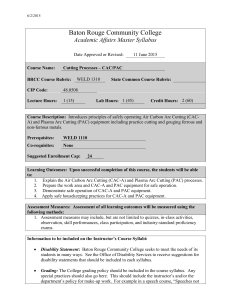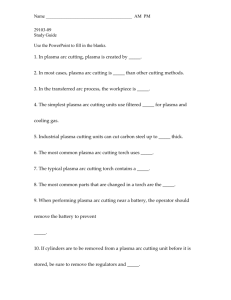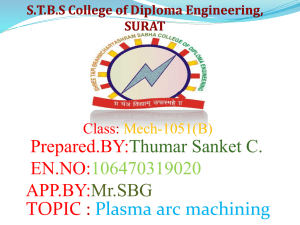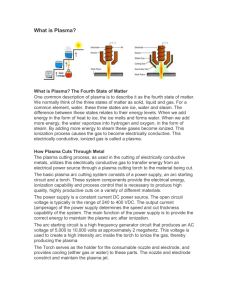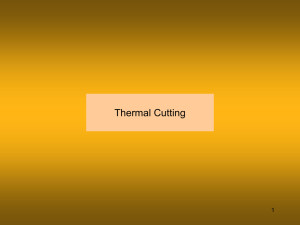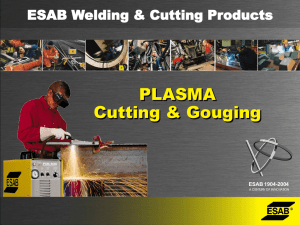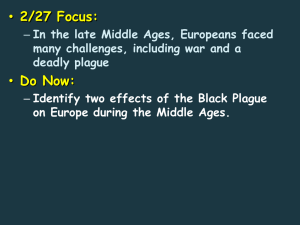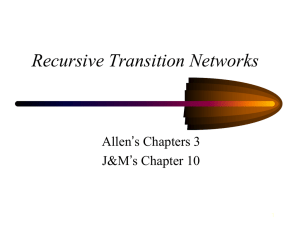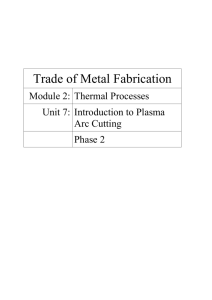Plasma Cutting and Its Effect on Mild Steel
advertisement
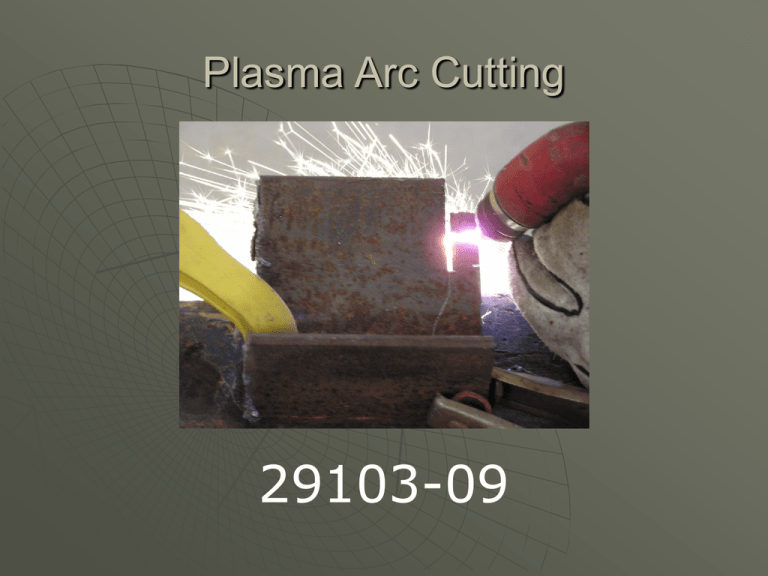
Plasma Arc Cutting 29103-09 Background of Plasma Arc Process In 1941 the U.S. defense industry was looking for a way to join light metals, from this came Tungsten Inert Gas (TIG) welding It was found that by passing a gas through the TIG arc that metal could be cut by gas in a plasma state TIG and plasma arc processes were created for the aerospace industry, primarily for aluminum which is difficult to weld by other processes and difficult to cut with a torch CNC Plasma Cutting Machine, 1980 How a Plasma Cutter Works An arc is used to ionize the gas around a high voltage arc This ionized gas is superheated by the arc to plasma (1) In the plasma state, the gas is at 30,000˚F, reducing the steel to a molten state, allowing the stream of gas to push it out of the cut Advantages Plasma Cutting Super heat makes plasma cutting faster and more efficient than any other form of cutting. (2) Two Types of PAC Transferred Arc Process – the work piece is part of the electrical circuit as in other arc processes. (3) Non-transferred Arc Process – the work is not part of the circuit. The arc is generated inside the torch and nozzle. Most PAC The simplest and most common form of PAC is the use of filtered compressed air (4) and cooling gases. When compressed air is used with a PAC unit, the correct air flow rate and pressure are maintained by the air pressure regulator and filter/dryer on the power source. (14) They use a pilot arc and the transferred arc process.(6) The most common PAC contains the following (7): • Retaining cup • Copper electrode with a hafnium thoriated tungsten insert • Gas swirl ring, and • nozzle Most PAC The most common PAC PARTS THAT ARE CHANGED OUT ARE (8): • ELECTRODE • NOZZLE • MOST HEAVY DUTY PAC REQUIRE GAS: ONE GAS CYLINDER CONTAINING THE CUTTING GAS AND ANOTHER CONTAINING SHIELDING OR COOLING GASES. (11) • Sometimes they will hiss and sputter like an oxyfuel torch. This means that there is moisture entering the unit through the air line. (15) SAFETY PAC The plasma cutter can get up to 30,000 degrees F. In industrial uses it can cut up to 3” thick mild steel. (5) It will cut through gloves, never put hands under the plasma arc or the work piece when cutting. Make sure plasma cutter power Is off before touching. Safety glasses, full face mask, or helmet, same rules as a apply to other arc processes. Same PPE (leather, dark clothes, wool, cotton, thick, boots, gloves, insulated). SAFETY FIRE AND EXPLOSION WITH PAC CHECK FOR FLAMMABLES DUE TO SPARKS (MATCHES AND LIGHTERS, ETC.) NEVER USE OXYGEN AS COMPRESSED AIR (BABOOM!) A HYDROGEN GAS EXPLOSION EXPOSURE EXISTS IF USING A PAC NEAR A BETTERY. (9) ALWAYS REMOVE CYLINDERS AND REPLACE CYLINDER CAPS FROM PAC UNITS. (10) SETTING FOR PAC CHECK THE METAL AND THICKNESS YOU ARE CUTTING. THUIS WILL DICTATE THE SETTINGS: • RATING MACHINERY USUALLY BY: DUTY CYCLE MAXIMUM CUTTING CAPABILITY • IMPORTANT THAT YOU UNDERSTAND THE POWER SUPPLY REQUIRED AND LIMITATIONS BEFORE COMMENCING CUTTING. • RUNS ON DCEN • MOST RUN ION 115 OR 230 VAC AND CUTTING THINNER SHEET OF METAL, 14 TO 30 AMPS SETTING FOR PAC CHECK THE METAL AND THICKNESS YOU ARE CUTTING. THUIS WILL DICTATE THE SETTINGS: • RATING MACHINERY USUALLY BY: DUTY CYCLE MAXIMUM CUTTING CAPABILITY • IMPORTANT THAT YOU UNDERSTAND THE POWER SUPPLY REQUIRED AND LIMITATIONS BEFORE COMMENCING CUTTING. • RUNS ON DCEN • MOST RUN ON 115 OR 230 VAC AND CUTTING THINNER SHEET OF METAL, 14 TO 30 AMPS • HOWEVER A 2” ALUMINUM MAY REQUIRE UP TO 250 AMPS. (12) SETTING FOR PAC ANGLE IS ALSO AN IMPORTANT VARIABLE. • THIN STEEL, USE 0 DEGREES ANGLE. (13) When compressed air is used with a PAC unit, the correct air flow rate and pressure are maintained by the air pressure regulator and filter/dryer on the power source.
